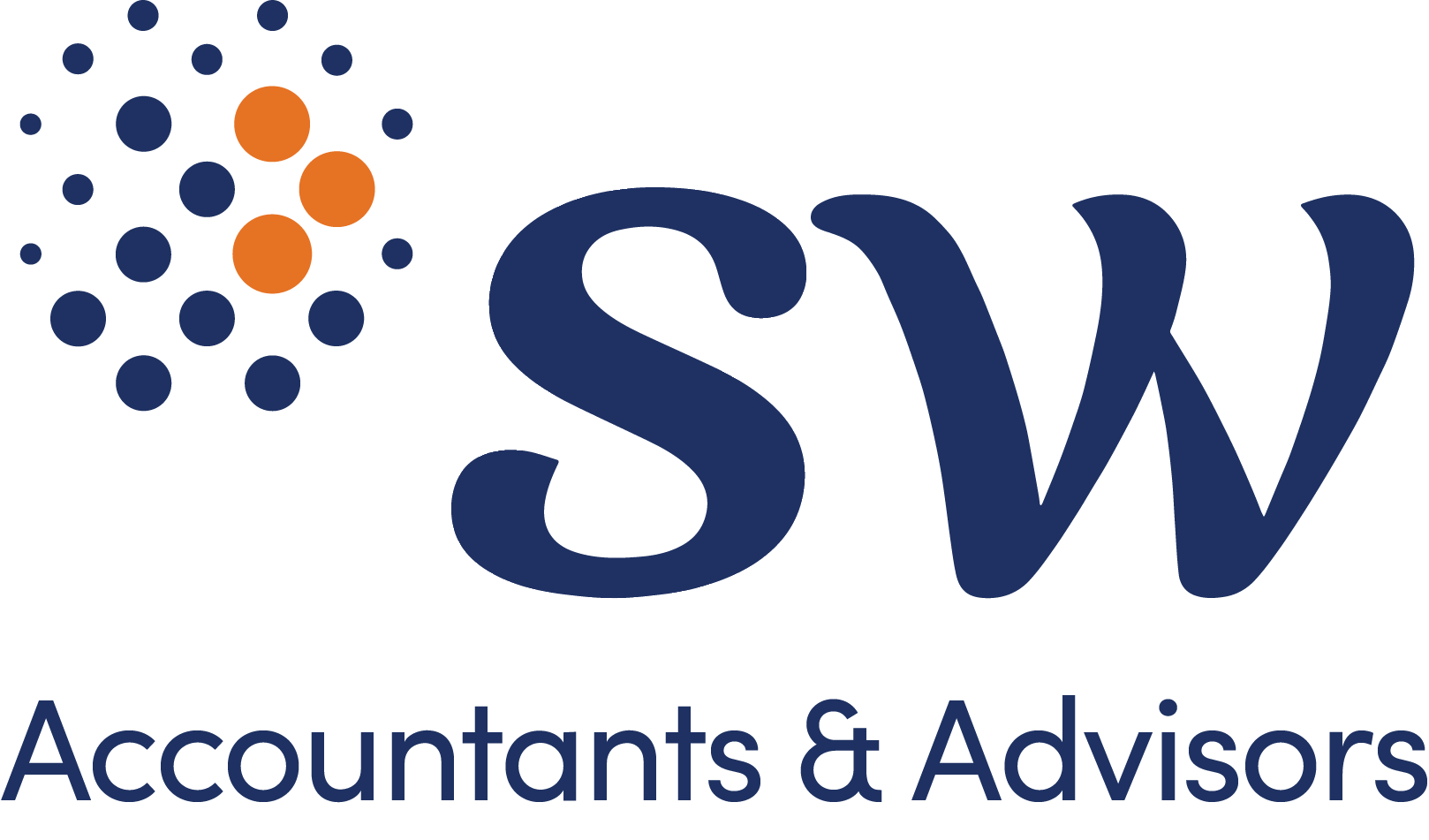
We are thrilled to share that SW’s very own Amanda Lee, Chief Marketing Officer, has won the 2024 National Women in Banking and Finance (WiBF) Award for ‘Achievement in Professional Services’.
CEO of SW, Mr Duane Rogers says: “We are immensely proud of Amanda receiving this recognition for her achievements in professional services. This award is a testament to her accomplishments and her significant ongoing contribution to our firm.”
In 2024, Amanda led the firms public branding campaign titled “Australia’s best kept accounting secret.” This included comprehensive market research, stakeholder engagement, and led an in-house creative solution.
Chair of SW and the firm’s Financial Services Industry Group, Mr. Stephen O’Flynn, commended Amanda’s dedication to mental health, policy creation, and mentorship, noting her leadership in initiatives such as the firms Reconciliation Action Plan (RAP), Voluntary Modern Slavery Statement and advancing Gender Equality. Her commitment also earned her a place as the employee representative on SW’s CSR Committee.
Amanda has also been integral to SW’s l International Women’s Day events, and this year, she organised and moderated a panel of three SW female partners to discuss the UN theme ‘Invest in Women – Accelerate Progress’, inspiring young women at SW.”
Amanda says: “No one wins these awards by themselves. I have a brilliant team and have had the support and encouragement of so many people across my career and especially at SW. Thank you to Stephen for the nomination, I love our culture and I’m excited to be able to put a spotlight on such a great firm. Congratulations to WiBF on creating this incredible platform for women and to all the other finalists.”
Mr. O’Flynn further added “We are incredibly proud of Amanda and all that she has achieved as a leader at SW. She consistently delivers results beyond expectations and embodies a commitment to driving tangible changes, promoting diversity, and supporting socially responsible outcomes. Celebrated for her enthusiasm and dedication, Amanda has been recognised twice as a Value Leader, receiving the ‘Love Your Work – Value Award.”
Congratulations Amanda! We are thrilled to see WiBF acknowledge your impactful contributions both at SW and within the broader sector.
粤港澳大湾区制造业发达、产业体系健全,为研发、物流、金融、信息技术、商务、节能环保等生产性服务业的发展提供了广阔的空间。而粤港澳大湾区优越的营商环境,也吸引了越来越多企业进驻,新的发展形势亦带动了会计、审计的专业服务发展。
本文转载至3H三禾商服3H观点沙龙,原文是「搭乘大湾区发展快车,探索粤港澳大湾区会计服务融合」
近年来,粤港澳三地在会计与审计准则、市场拓展、技术创新和人才培养等方面进行了广泛深入的交流合作,实现了会计服务行业的创新发展。广东省财政厅贯彻落实省委“1310”具体部署,与香港中联办、澳门中联办等加强沟通对接,积极向财政部争取高端会计人才培养项目支持。在财政部的支持下,省财政厅在高层次财会人才素质提升工程中增设的“粤港澳大湾区高端班”在今年3月启动报名,社会反响热烈。大湾区高端班的实施落地,有助于培养一批熟悉粤港澳三地会计准则和经贸规则的高端会计人才,有助于打造会计产学研教合作交流平台,促进形成产业和人才集聚效应,为粤港澳大湾区建设提供高水平会计人才支撑。
虽然粤港澳三地人才正在逐步实现协同发展,但粤港澳三地在金融制度、税会差异、会计监管等方面仍存在一定的差异,这对三地经济的充分融合产生了一定的阻碍。目前有许多融合发展方面的问题仍待解决,例如制度差异造成的企业交易成本增加,跨境服务的壁垒仍未打破,跨境监管困难等。
本期3H观点沙龙-澳洲会计师公会“财会新视角”专栏将聚焦“粤港澳三地会计服务合作发展”,邀请来自澳洲会计师公会的会员,共同探讨港澳与内地会计融合发展的问题,针对大湾区的会计融合发展提供建议。
01 分享者介绍
朱国正先生
(澳洲资深注册会计师)
• 香港信永中和会计师事务所高级顾问
• 澳洲信永中和会计师事务所国际业务总监
• 在会计师行业执业超过40年,提供审计,国际税务规划,跨境并购服务
黎鸿才先生
(澳洲注册会计师)
• 灏信会计师事务所创始合伙人、会计学学士、国际经济与商法硕士,拥有国际上多项会计相关专业资格。
• 2021及2024年分别取得深圳前海蛇口片区及广州南沙片区、南沙新区港澳涉税专业人士执业资格。
• 拥有逾十年外部审计、澳门税务及财务策划等方面经验,熟悉澳门税制,香港、澳门及内地之经营及商业环境
02 主题分享
一、粤港澳三地会计师的执业差异
由于粤港澳的历史和制度差异导致三地在会计和审计制度以及会计监管等诸多方面存在不同,这不仅限制了三地更好地融合发展经济,也抑制了三地会计和审计功能的发挥。
在广东和港澳政府及会计业界积极推动下,粤港澳之间不断深化会计服务行业领域的合作,实现会计服务行业创新发展,受到政府、业界和三地企业的高度关注。
问
目前香港和内地的会计师在执业工作上主要存在哪些差异?
朱国正先生
会计师在香港和内地执业范围主要在于提供合规性的服务,而且以审计为主,同时涵盖税务申报和工商局年审/公司注册处年度申报等。专业水平大致上差不多。
存在的差异主要包括:
- 准则和法规:地方性的差异是自然的;
- 取态:以法规和专业准则为主导,或以客户要求为主导;
- 文化:对当地商业文化的了解;
- 语言:与客户沟通时采用普通话,白话,或香港式(中英混合)的广东话;
- 客户:在内地,客户群一般包括国有企业,在审计过程中,对国家的政策和行业法规要求须要具备一定程度的了解。在香港,客户群一般是民企,在服务过程中须要对股东及董事的个人背景和性格有一定程度的了解。
- 过程:在香港,服务的过程相对比较重要。在内地,服务的结果相对比较重要。这方面也会影响到收费的标准;
- 责任:在香港,审计服务的风险集中在事务所和主审合伙人。在国内,审计服务的风险在个别情况也会涵盖审计现场的同事。
中国会计师行业从新启动是最近几十年的事情,但行业发展和跟国际接轨的速度相当快。如果能够落实中国注册会计师协会行业发展规划(2021-2025 年)所定的主要目标,相信能够进一步促进中港澳三地会计师的互联互通,给企业和商业社会带来新机遇。
问
目前粤港澳大湾区的跨境税务方面主要存在哪些需要特别关注的问题?团队是如何应对的?
黎鸿才先生
我认为粤港澳大湾区的跨境税务方面主要存在以下问题:税务制度差异、税务合规和申报以及跨境税务争议等。
我们主要的应对方式是加强团队的税务合规培训、建立跨境税务咨询服务、加强与税务机关的沟通、运用数字化技术提升税务管理的效率和准确性等。
二、政府及粤港澳会计师如何加强跨境合作
改革开放以来,广东凭借地缘优势,吸引了众多来自香港、澳门的资金入驻,自那时起,三地便开始在会计服务领域进行交流,开展了会计准则体系、会计服务、会计资格等方面的深入合作。
粤港澳三地分别在2010 年、2011年共同签署了《粤港合作框架协议》及《粤澳合作框架协议》,其中包含了许多与三地会计衔接有关的内容,三地会计领域的衔接与合作也从非正式转为正式,提升了会计合作水平,推动了三地会计师服务行业规则对接、会计资格互认、人才跨境执业的积极探索。
问
现阶段粤港澳大湾区各项合作政策密集出台,以及高端会计人才培养项目“粤港澳大湾区高端班”的开设实现大湾区人才的互联互通,这将给会计行业的发展迎来怎样的机遇,又存在哪些挑战?
朱国正先生
粤港澳的人才互联互通须要在多层次和多方面努力。
- 多层次:高端人才培训班是一个积极性的开始。培训的对象是财会界高端资深的行业人才。每期培训的人数大概 30 人。期望建立在首三期的成功平台上,日后可以增加培训的人数,加开培训班的次数,和扩大培训对象的职别。
- 多方面:内地从业人员的优势在于对中国国情的了解和提供当地人脉,港澳的优势在于了解国际视野和提供相关人脉。双方合作可以互补长短。故此服务团队如果能够包括两地财会界多方面的人才将会创造更大的协同效应,对协助国内企业“走出去”及跨国企业“走进来”带来实质性贡献,也能带动一带一路的发展。在审计师的行业经验基础上,两地会计师可以进一步提供咨询服务,给企业创造营商和财务管理的增值服务,提高会计师服务的性价比。
存在的挑战则包括信息的流通(国际互联网的畅通),人才的流通(工作签证的方便),语言的沟通(双语的转换能力),和会计师行业的信息化建设。
问
您认为政府在支持粤港澳会计跨境服务发展方面,还可以采取哪些进一步措施?
朱国正先生
政府须要加强的地方可以考虑:
- 鼓励香港的大学的会计课程加进中国税法,公司法,和会计准则,并鼓励学生修读;
- 同时间,也鼓励内地的大学的会计系加进普通法的基础理念和有关商业法的课程;
- 容许粤港澳的会计师事务所加入境外的合伙人(可以设立人数上限),用以鼓励承接跨境项目;
- 容许粤港澳的会计师事务所加入非审计的合伙人(可以设立人数上限),用以鼓励发展非审计的咨询的项目;
- 与港澳三地政府考虑放宽跨境人才培训的数量并且提供方便(包括签证),用以鼓励会计师透过实地现场的工作,加强对当地法规,准则,文化的了解和人脉的建立。
问
在粤港澳大湾区整合发展的大背景下, 三地的会计师及税务师可以如何加强信息和资源共享,提升整体服务水平?
黎鸿才先生
关于加强三地信息和资源共享方面,我认为可以在以下几点考虑:
- 人才交流与培养加强:三地会计师事务所加大人才交流力度,包括互派人员、共同培训等;培养具备国际化视野、扎实专业知识、领导力和数字化技能的综合型人才。
- 拓展跨境业务:增加跨境审计、税务筹划、并购咨询等业务,为跨境企业提供服务。
- 推动行业规则对接与资格互认:推动三地在会计和税务服务标准化方面的合作,推动三地在会计和税务师资质上的互认,建立“大湾区税务师”的新职称。
- 创新合作模式和服务领域:探索创新的合作方式,适应市场变化和客户需求;开拓绿色金融、社会责任报告等新的服务领域。
问
大湾区建设要求会计师服务能力不断提升,您认为未来会计师应当具备哪些新的专业技能和能力?
黎鸿才先生
我认为未来会计师需要具备以下这几点能力才能更好适应大湾区的发展:
- 跨境税务和会计知识:熟悉三地法规、跨境税务筹划能力等;
- 技术和数据分析能力:数据分析和管理、数字化会计及审计工具等;
- 国际视野和跨文化沟通能力:熟悉国内外准则、具备跨文化沟通能力等;
- 跨界知识及业务能力:具备一定的法律、经济、管理等方面的知识、能够有效协调和管理大型复杂项目等。
要实现三地会计服务业的融合和协同发展,建立三地共同认可的会计与审计标准体系,实现互联互通、发展跨境业务是尤为重要的。三地会计师行业也能借助区位、政策与资源优势,拓展跨境业务与国际业务,探索创新合作模式与服务领域,跟上市场变化步伐。
为促进会计人才发展,粤港澳三地应健全会计资格的互认机制,进一步完善粤港澳会计专业资格确认办法,这将为三地会计师事务所在大湾区跨区域开展会计服务提供方便,助力打造大湾区人才高地。
澳洲会计师公会作为全球领先的专业会计团体之一。1886年成立至今,拥有137年的悠久历史,在100多个国家和地区拥有超过172,000名会员,其中近3万名会员担任高级管理职位。公会帮助全球会员提升专业综合素养,拓宽国际化视野,助力人才时刻链接大中华区、东盟、中东、欧盟和澳新市场,把握最新机遇。
为实现内地财会人才进一步拓展跨境服务及国际业务,澳洲会计师公会最新公布,凭中国注册会计师(CICPA)身份,且符合以下资格则有机会申请成为澳洲会计师公会会员。
通道一
具有5年或以上工作经验的专业人士,须满足以下条件:
- 持有被澳洲会计师公会认可的、至少与澳洲学士学位相当的大学学位;
- 根据已提交的简历和工作证明,具有至少5年相关工作经验;
- 已成功完成中国注册会计师协会(CICPA)所有考试及通过当年年检;
- 拥有中国注册会计师(CICPA)的有效资质;
- 没有受到任何纪律处分或调查;
- 满足澳洲会计师公会对会员资格的任何额外入会要求和/或条件。
通道二
工作经验不足5年的专业人士,须满足以下条件:
- 持有被澳洲会计师公会认可的、至少与澳洲学士学位相当的大学学位;
- 根据提交的简历,具有不足5年的相关工作经验;
- 已成功完成中国注册会计师协会(CICPA)所有考试及通过当年年检;
- 拥有中国注册会计师(CICPA)的有效资质;
- 没有受到任何纪律处分或调查;
- 满足澳洲会计师公会对会员资格的任何额外入会要求和/或条件。
根据空置住宅土地税(VRLT)的规定,维多利亚州度假屋的业主可以松一口气了,因为那些以信托或公司形式持有的物业现在可以申请度假屋豁免。
政府兑现了承诺,将 VRLT 度假屋豁免扩大适用至公司和信托持有的土地。根据目前议会正在审议的《2024年州税修正案》,在 2023 年 11 月 28 日之前持有家庭度假屋的公司和信托将能申请豁免,与个人申请豁免基本相同。
在 2024 年 12 月 31 日之前要及早思考并实施任何紧急措施,以确保在下一轮评估中取得预期成果。
空置住宅土地税(VRLT)回顾
全维多利亚州的居住用地
VRLT 指:
· 对被认定为在一个自然年内“空置 ”超过 6 个月的维多利亚州住宅物业征收的年度物业税
· 其目前适用于墨尔本内城区的土地,但从 2025 年 1 月 1 日起,其将适用于维多利亚州全境的住宅物业
· 此外,还需缴纳州土地税和联邦年度空置费
· 目前税率为土地资本改良价值的 1%,而如果土地连续三年需要缴纳 VRLT,税率就可能会提高到 3%。
如果业主所拥有的居住用地在上一个自然年内空置超过 6 个月,则应在 1 月 15 日之前通知州税局。
未改良的居住用地
自 2026 年 1 月 1 日起,VRLT 将适用于墨尔本大都会区内所有至少 5 年未开发且可用于住宅开发的未改良居住用地。
度假屋豁免有哪些变化?
VRLT 度假屋豁免是本事务所客户最热议的话题。在该法案提出之前,度假屋豁免主要只适用于个人住宅业主,不包括信托和公司持有的物业。这引起了业主们极大的关注,因为通过公司和信托持有度假屋以达到资产保护和其他目的的做法很常见。
在该法案项下提出的修正案应能纠正当前的问题,并为维多利亚州的业主们提供一些减免,此为得民心之举,但根据草案中的资格标准,通过公司和单位信托持有的度假屋也许只能获得有限的减免。
公司和信托的资格标准
对于在维州拥有度假屋的公司和信托公司,如果满足以下条件,则可免征 VRLT:
a. 业主在 2023 年 11 月 28 日持有度假屋,或在该日期之后根据 2023 年 11 月 28 日或之前订立的合同购得该物业,且业主自此一直持有该物业
b. 自 2023 年 11 月 28 日以来,土地业主的股权或实益权益没有发生变化,除非相关变化涉及亲属
c. 若为土地业主公司或单位信托,则需要由一人或多人在该公司或信托至少持股50%,而且这些人要在澳大利亚拥有另一处以主要居住地(PPR)为用途并居住的物业。对于拥有土地的家族全权信托,指定受益人或亲属必须曾经在澳大利亚把另一块土地用作PPR并居住。
d. c 段所述个人在一个自然年内将土地用作度假屋并居住的时间至少达到 4 周。
e. 州税专员在考虑了土地的位置、土地与相关个人的 PPR 之间的距离以及土地使用的性质和频率后,确信土地是作为度假屋使用并居住的。
通过公司和单位信托持有的住房面临的挑战
公司和单位信托持有的度假屋面临的挑战是,要获得豁免资格,至少 50%的公司股份或信托单位需由个人直接持有。一般来说,股份或单位是通过全权信托持有的,而不是由个人直接持有。因此,这些公司和单位信托将不符合豁免条件。澳大利亚房地产理事会已将这一限制通知政府,希望政府能重新审视这一立场。
连续性土地
对于有资格申请度假屋豁免的业主,他们还可以就其拥有的与度假屋相邻的、仅用于度假屋使用和居住者的私人利益和享受的任何土地(例如网球场和游泳池)获得 VRLT 豁免。这项豁免适用于在墨尔本大都会区拥有度假屋和连续性土地(产权分开)的业主,因为从 2025 年 1 月 1 日起,墨尔本大都会区内的空置土地未改良 5 年或以上的,需缴纳 VRLT。
信永中和如何帮助您
维多利亚州度假屋业主应仔细考虑上述变化以及任何适当行动,以充分利用现有的相关豁免。在 2024 年 12 月 31 日之前要及早思考并实施任何紧急措施,以确保在下一轮评估中取得预期成果。
我们的州税务专家可以为您提供关于VRLT和任何豁免资格的适当建议和协助。
Under the Vacant residential land tax (VRLT), owners of holiday homes in Victoria can breathe a sign of relief with those properties held in trusts or companies now may be appliable for the holiday home exemption.
The Government has delivered on its promise to extend the VRLT holiday home exemption in relation to land held by companies and trusts. Companies and trusts which held a family holiday home before 28 November 2023 will be able to access the exemption in substantially the same way as individuals under the State Taxation Amendment Bill 2024 currently before Parliament.
Any action needs to urgently be considered and implemented well ahead of 31 December 2024 to ensure the desired outcome in the next round of assessments.
Recap on Vacant residential land tax (VRLT)
For residential land across all of Victoria
The VRLT is:
- a yearly property tax imposed on residential properties in Victoria that are deemed ‘vacant’ for more than six months in a calendar year
- it currently applies to land in inner Melbourne areas but from 1 January 2025 it will apply to residential properties throughout Victoria
- it is in addition to any state land taxes and federal annual vacancy fee that are payable
- currently at 1% of the capital improved value of the land and can rise to 3% where the land is liable for VRLT three years in a row.
Owners are required to notify the SRO by 15 January if they own residential land that has been vacant for more than 6 months in the preceding calendar year.
Unimproved residential land
From 1 January 2026, VRLT will apply to all unimproved residential land in metropolitan Melbourne that has remained undeveloped for at least 5 years and is capable of residential development.
What is the change to the Holiday home exemption?
The exemption for holiday homes under VRLT has been the most topical with our clients. Prior to the Bill, the holiday home exemption was largely available only to individual home owners, not including properties held by trusts and companies. This caused significant concern among property owners as it is common to hold holiday homes through companies and trusts for asset protection and other purposes.
The amendments proposed under the Bill should rectify the current issue and provide Victorian property owners some welcomed relief, however it may only provide limited relief to holiday homes held through companies and unit trusts due to the drafted eligibility criteria.
Eligibility criteria for companies and trusts
For companies and trusts that own holiday homes in Victoria, an exemption from VRLT is available if the following conditions are met:
- The owner held the holiday home on 28 November 2023, or acquired the property after that date under a contract which was entered into on or before 28 November 2023, and the owner has continuously held it since that time
- There has been no change in the shareholding or beneficial interest in the land owner since 28 November 2023, unless the change involves persons who are relatives of one another
- There needs to be a minimum ownership interest of 50% in land owning companies or unit trusts by one or more individuals who have another property in Australia that they use and occupy as their principal place of residence (PPR). For a land owning family discretionary trust, a specified beneficiary or a relative must have used and occupied other land in Australia as a PPR.
- The land has been used and occupied as a holiday home for a period of at least 4 weeks in a calendar year by an individual referred to in paragraph c.
- The Commissioner of State Revenue is satisfied that the land is used and occupied as a holiday home, taking into account the location of the land, the distance between the land and the PPR of the relevant individuals and the nature and frequency of the use of the land.
Challenge for homes held through companies and unit trusts
The challenge for holiday homes held in companies and unit trusts is that to qualify for the exemption, at least 50% of the shares in the company or units in the trust needs to be held directly by an individual. Generally, shares or units are held through discretionary trusts, rather than directly by the individual. Therefore, these companies and unit trusts would not be eligible for the exemption. The Property Council of Australia has notified the Government of this limitation in hopes that Government will review this position.
Contiguous land
For owners eligible for the holiday home exemption, they could also receive an exemption from VRLT for any land that they own that is adjoining to the holiday home and used solely for the private benefit and enjoyment of the person who uses and occupies the holiday home (for example, tennis courts and swimming pools). This exemption is relevant for owners with holiday home and contiguous land (on separate title) located in metropolitan Melbourne because from 1 January 2025, vacant land within metropolitan Melbourne left unimproved for 5 years or more becomes liable for VRLT.
How SW can help
Owners of holiday homes in Victoria should carefully consider the above changes and any appropriate actions to take full advantage of the relevant exemptions that are available. Any actions needs to urgently be considered and implemented well ahead of 31 December 2024 to ensure the desired outcome in the next round of assessments.
Our state tax experts can provide you with appropriate advice and assistance in relation to VRLT and any eligibility for exemption.
Contributors
上周,财政部长公布了2024年联邦预算,致力于应对通货膨胀、高利率和生活成本。 在充满挑战的环境中,企业和个人都感受到了压力。为应对这些经济状况,澳大利亚政府要有战略远见并采取适应性措施。
今年的联邦预算正值关键时期,民众对其寄予厚望,期待从中找出紧迫问题的解决方案。我们将探讨 2024/25年联邦预算的各种复杂问题,并发掘其中隐藏的亮点。贵公司可以把握重要机遇,借助有洞察力的见解,抵御财务逆境并实现增长。
联邦预算对贵公司有何意义?
我们的联邦预算快讯帮助您总览预算中的亮点并就贵公司所处行业的潜在机遇提出见解:
SW Accountants & Advisors (SW) is pleased to announce the appointment of Christine Krause as a Director in our Risk Advisory and Internal Audit team.
“We are thrilled to be able to attract such quality talent in Christine. This not only demonstrates our commitment to supporting our clients’ needs, but also to our culture that is underpinned by a clear purpose and strong values. With Christine, we see great alignment with our capabilities, clients and broader SW networks,” said Mr Duane Rogers, CEO.
SW’s strong reputation in financial services related to Foreign ADIs, and funds management will be further strengthened by Christine’s expertise in financial services, including investment management. Christine’s long-standing role in Risk with Australia’s sovereign wealth fund, Future Fund, will strengthen SW’s risk advisory and assurance capability.
Ms Christine Krause says: “I am excited to be joining the SW team and being part of the internal audit and risk advisory growth strategy. I am proud to be joining an organisation that has built its culture from focusing on both its people and clients in order to achieve shared success, and am looking forward to living and breathing that every day.”
Partner, and Head of SW’s Assurance and Advisory Division, Mr Rami Eltchelebi says: “It’s fantastic to have Christine join SW as a partner. Her appointment strengthens our capability as she brings 25+ year of professional experience working both in the profession (KPMG, PwC) and in industry. Developing and leading internal audit and risk management functions in industry makes Chrstine an advisor of choice as she draws on her industry experience to provide value that clients can relate to.”
Mr Rogers says, “Together with the appointment of Vanessa Priest and Kirsty McDonnell last month in Sydney, and Trent Godden-Minette in Melbourne in January this year, we are excited to bring four new partners on board that all have specific talents and a desire to drive growth in their respective markets. Pleasingly, and with a lot of hard work from our people and the support of our clients, we are on track to deliver on our four-year strategic plan. These appointments further bolster our momentum in the market and ensure we can support our growing client needs.”
In addition to financial services, our experienced team also service several other key sectors: government, utilities, education, hospitality and the private sector.
China is proposing mandatory sustainability reporting for listed companies, potentially impacting Australian subsidiaries of Chinese firms and Australian investors.
Draft guidelines unveiled in February mandate sustainability reporting for companies listed on the Shanghai, Shenzhen, and Beijing Stock Exchanges. This move aligns with global trends as jurisdictions worldwide increasingly require sustainability and climate related reporting.
Guideline areas
The guidelines will encompass areas such as:
- Emissions
- Climate impact
- Governance
- Strategy
- Risk management
What does this mean for Australian Businesses?
- Australian businesses with connections to Chinese entities must prepare for heightened scrutiny regarding carbon emissions and adherence to international reporting standards.
- Chinese entities listed on the mentioned exchanges will be expected to disclose comprehensive sustainability reports, drawing on both domestic and international standards.
Globally, many jurisdictions have now released draft or final standards, draft or final legislation and rollout plans for companies to implement mandatory sustainability reporting. In Australia some entities are already including mandatory climate disclosures under the NGER legislation, and many more large companies in Australia are expected to need to comply with sustainability disclosure standards in the coming years. China mandating sustainability disclosures is in-line with what is happening in other jurisdictions and evidence of the current global trend. There is also significant focus in China on reducing emissions.
How can SW help?
In response to this shift, SW offers support to companies through gap analyses and readiness assessments for mandatory sustainability reporting. SW Partners, Rene Muller, John Dorazio, Tom Mullarkey, and Associate Director Jimmy Cao are available to provide guidance and assistance throughout this transition.
Reach out to your SW contacts or the key contacts here for a conversation.
Contributors
SW Accountants & Advisors (SW) is pleased to announce the appointment of Vanessa Priest and Kirsty McDonnell as Tax Partners in our growing Sydney office.
“We are thrilled to welcome Vanessa and Kirsty to our Sydney office,” said Mr Duane Rogers, CEO. “Their combined expertise and leadership qualities will undoubtedly strengthen our team and enhance our ability to continue to deliver exceptional service to our clients.”
Bringing a wealth of experience from a boutique practice, with extensive backgrounds in large and mid-tier firms, Vanessa and Kirsty are set to play a pivotal role in advancing SW’s national growth strategy. Their appointment marks a significant step forward in the firm’s commitment to sustained and meaningful growth.”
Says Partner Ms Kirsty McDonnell: “I am excited to be part of SW’s growth strategy, supporting the Sydney office in particular. I’m proud to be joining a very a strong technical team of advisors that have a clear culture of driving success for their clients and team members. Joining SW will support our clients’ broader needs across audit, specialist tax services and corporate finance. Additionally, having a strong collaborative and supportive culture is important to me, and one that we feel proud to be a part of.”
Ms Vanessa Priest, Partner, says: “Caring for my clients, providing support and growth for my team and contributing to a great work culture are the key drivers for me. SW has the core values and principles and has the technical expertise and services my clients need.”
National Head of Tax, Ms Sam Morris said: “Their complementary capabilities and strong presence in the tax market will not only bolster our brand recognition in Sydney but also contribute to the firm’s continued growth and success.”
“We are confident that Vanessa and Kirsty will seamlessly integrate into our organisational culture,” added Mr Rogers. “Their addition to our team underscores our commitment to attracting top talent and providing unparalleled value to our clients.”
Please join us in extending a warm welcome to Vanessa Priest and Kirsty McDonnell as they embark on this exciting new chapter with SW Accountants & Advisors.
感谢您一直以来的支持。 祝愿您在新的一年里幸福安康、成就辉煌。Thank you for your support throughout the year. We wish you a healthy, successful & prosperous new year.




